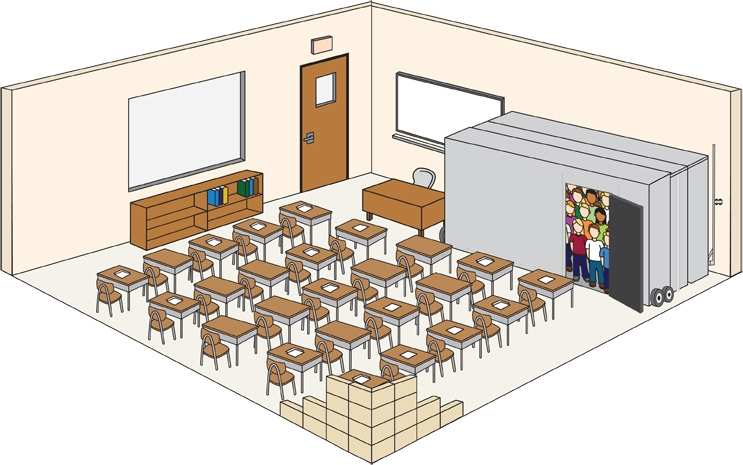Ethical Dilemma: Questions school officials should ask about 'safe rooms'
If there is a shooter inside the school, what happens when all of the students can't get into the safe room fast enough? Does a teacher lock the door before everyone is inside?
Part 1 of a series for subscribers focused on the questions school officials should be asking about school security products, policies, and procedures.
Dozens of security vendors have started flooding the market with custom “safe rooms” designed to go inside school classrooms. The designs vary from folding bulletproof panels to metal containers with bank vault style doors.
In theory, the concept is pretty simple. If kids can get inside a bulletproof box, they can’t be shot. Unfortunately, complex problems rarely have simple solutions.
Safe Rooms in Schools
Imagine the following scenario:
A second-grade teacher is at the whiteboard when she hears gunshots in the hallway. We know from interviews with teachers at Parkland and Uvalde that from the time they first heard gunshots to the moment bullets were fired into their classrooms was just seconds.
Key questions for school administrators:
Can thirty second graders transition from sitting at their desks to everyone getting inside a 5x10 metal box in less than 10 seconds?
What about 30 seconds?
Either way, it’s probably too late.
The only way to get students into a shelter faster is to create a larger shelter that has more doors. Upsizing doesn’t really work because school classrooms don’t have a lot of extra space. The maximum size of the shelter is limited by the minimum amount of space for the classroom to still be functional.
The next rational line of thought could be, “Why not build the whole classroom as a shelter?” Hold onto that thought—we’ll address that question later in this article.
Ethical dilemmas
Let’s return to the shooter in the hallway. Assume the students are extremely prepared for the lockdown and in less than 10 seconds, 25 of the 30 students are inside the shelter. The teacher is ushering them into the door as they see the shooter walking into the classroom.
Ethical questions for school officials to consider:
Does the teacher jump inside and lock the shelter door leaving five students trapped in the classroom with the shooter?
The student who takes the longest to get to the safe room may be a student in a wheelchair, or a blind student.
Will the wheelchair fit through the safe room door?
Are students with functional needs left behind?
This is a terrible dilemma. If the teacher locks the shelter door, these five students may be shot. If the teacher leaves the door open, the attacker can shoot 25 students who are packed into a confined space.
Legal considerations
Not only is this an ethical dilemma, its a legal issue too. “Confined space” is a term defined by OSHA as any single entry space that isn’t designed for continuous occupancy or storage, like a fuel tank, grain silo, or metal container.
Many saferooms meet the legal definition of a confined space and a school district can be liable for any injuries and deaths within it. It’s actually a fineable violation for anyone without OSHA training go inside a confined space.
All parts of a school also need to meet the accessibility standards issued under the Americans with Disabilities Act (ADA). The door to the saferoom must allow passage of people using wheelchairs or crutches with an opening at least 32 inches wide. The saferoom also needs to have enough room for the wheelchair to turn around inside.
After a ruling last year, any parent who believes the saferoom is violating their child’s access needs can sue the school for damages:
On March 21, 2023, the US Supreme Court ruled that parents of students with disabilities who sue for disability discrimination under Title II of the Americans with Disabilities Act, do not have to exhaust their remedies under the Individuals with Disabilities Education Act before seeking monetary damages.
Where Classroom Safe Rooms Fall Short
Getting everyone inside the safe room also assumes that the shooting didn’t start inside the classroom. In 210 different shootings at schools since 1966, the first shots were fired when the shooter was already inside a classroom.
Keep reading with a 7-day free trial
Subscribe to School Shooting Data Analysis and Reports to keep reading this post and get 7 days of free access to the full post archives.






